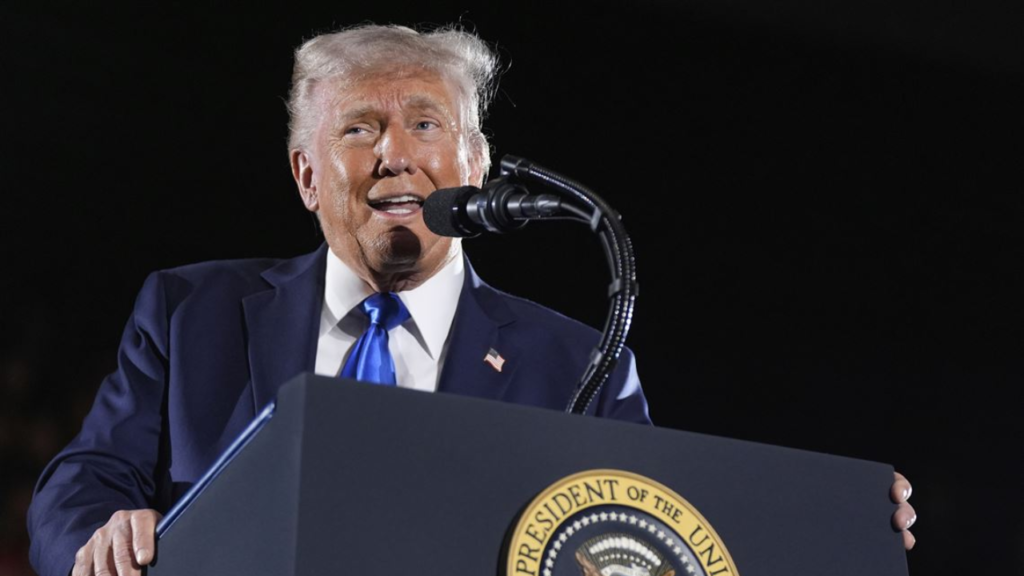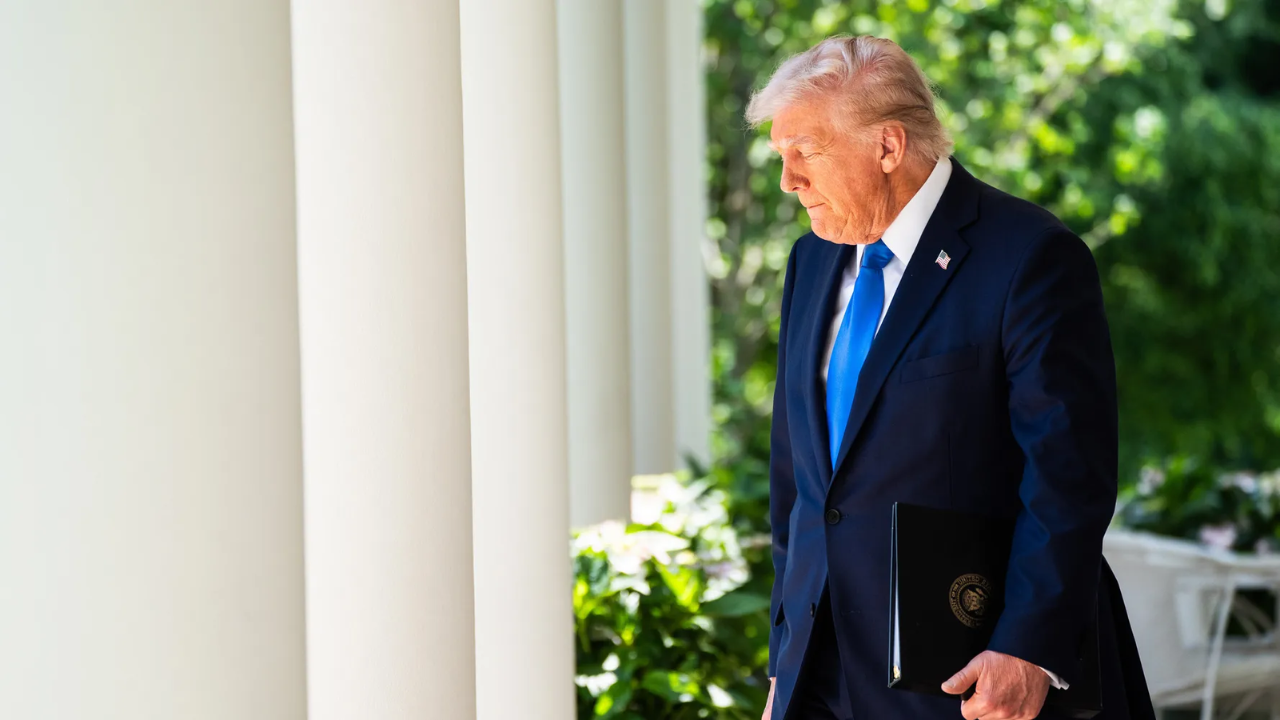President Trump’s 2026 budget plan has caused a stir with proposals for sharp spending cuts and an increase in national security spending.
According to the White House, the budget would cut non-defense domestic spending by $163 billion while directing more funds towards defense.
It’s clear from the budget proposal that Trump is aiming to reduce spending on diversity programs and initiatives focused on climate change.
However, there are no details on key areas like income taxes, tariffs, or the budget deficit. This lack of information has sparked concerns about how Trump plans to reduce taxes, address the national debt, and still maintain economic growth.
Budgets don’t become law right away, but they play an important role in setting the stage for fiscal year debates. This particular budget, being Trump’s first since his return to the White House, is seen as a crucial document that could define his approach for his second term.
It also reflects the priorities of the Republican Party as they look ahead to Congress’ involvement in shaping the national financial future.
House Speaker Mike Johnson (R-La..) defended the budget, calling it a display of fiscal discipline. He emphasized the need for reducing the growing budget deficits.
Interestingly, the budget does not include any projections for government borrowing, which may be a sign of difficulties in balancing the budget amidst the proposed tax cuts.
Johnson stated, “President Trump’s plan ensures every federal taxpayer dollar spent is used to serve the American people, not a bloated bureaucracy or partisan pet projects.”
One of the programs that seemed at risk but was spared in the proposal is Head Start, the child care program that supports low-income families.
An earlier version of the budget had suggested cutting the 60-year-old program, sending shockwaves through communities in California, where many children rely on Head Start for care, medical screenings, and food.
While the final budget doesn’t appear to suggest any cuts to Head Start, there is still uncertainty, as the budget does not provide clear funding levels for the program.
Senator Patty Murray (D-Wash.) was quick to point out the dangers of Trump’s budget cuts. She believes that the cuts could end up being more severe than what has been outlined.
Murray criticized Trump’s approach, stating that his budget defunds programs that help working-class Americans while offering massive tax cuts to the wealthiest individuals and increasing taxes on middle-class Americans.
The budget proposes a total cut of 7.6% in discretionary spending next year. This includes significant reductions across various departments. The State Department and other international programs would see a drastic 84% cut in funding, down to $9.6 billion.
Similarly, the Housing and Urban Development Department, Health and Human Services, and the Education Department would each face cuts of around $30 billion.
On the other hand, the Defense Department would receive an additional $113 billion, and the Department of Homeland Security would get $42.3 billion more.
The budget also includes major cuts to programs that aid lower-income Americans. The IRS and FBI would face reduced funding, and the Low Income Home Energy Assistance Program would be eliminated. College students relying on work-study programs would also face a significant $980 million funding cut.
There are similar cuts planned for adult education and English language programs, as well as for health programs like the Centers for Disease Control and Prevention (CDC) and the National Institutes of Health (NIH).
The proposed budget also includes cuts for infrastructure projects related to climate change, with over $15 billion being taken away from related programs. Additionally, the National Oceanic and Atmospheric Administration (NOAA) would lose $1.3 billion.

The timing of this budget is particularly sensitive, as Trump’s administration has already implemented tariffs, which could result in hundreds of billions of dollars in tax increases.
The tariffs have sparked a trade war, causing widespread concern about the potential negative effects on the economy. The Office of Management and Budget, led by Russell Vought, has released a “skinny version” of the budget that includes top-line numbers for discretionary spending.
This budget draws inspiration from Project 2025, a sweeping plan developed by the Heritage Foundation that aims to reduce the federal workforce and restructure government agencies.
While the full details of the budget will be revealed soon, it is clear that the current budget proposal is only the beginning of the larger debate over the nation’s spending priorities.
The U.S. federal budget, which has been growing steadily for years, now exceeds $7 trillion. With annual deficits approaching $2 trillion and interest payments nearing $1 trillion, the country’s debt continues to climb, driven by pandemic-related spending, tax cuts, and the growing costs of Medicare and Medicaid.
Democrats are preparing to strongly oppose Trump’s budget, viewing it as evidence of the administration’s intent to undermine government programs that are crucial for many Americans.
Meanwhile, Republicans in Congress are working on a separate piece of legislation that will focus on tax breaks, spending cuts, and additional funding for Trump’s deportation efforts.
This bill, unlike the budget, would have the force of law, but deep divisions remain within the Republican Party as they attempt to push it through Congress.
As the debate continues, it is Congress that will ultimately determine the outcome of Trump’s proposed spending cuts.
The political process will involve negotiating and approving the necessary bills to fund federal programs, but as history shows, this process is often fraught with delays and stopgap measures to prevent a government shutdown.
Russell Vought, a seasoned budget strategist, is expected to play a pivotal role in pushing Trump’s budget plan through Congress.
Vought has a long history of advocating for conservative fiscal policies, and as the head of Project 2025, he is deeply involved in reshaping the federal government’s spending priorities.
Additionally, Vought is preparing a $9 billion proposal that would dramatically cut funding for the U.S. Agency for International Development (USAID) and the Corporation for Public Broadcasting, including programs like PBS and NPR, which could face severe cuts under the new plan.
The budget plan marks the beginning of what is expected to be a contentious and complicated debate over the nation’s financial future.
It remains to be seen how Trump’s proposals will be received by both Congress and the American public, but one thing is clear: the fight over the future of government spending in the U.S. is far from over.
Reference
Disclaimer- Our team has thoroughly fact-checked this article to ensure its accuracy and maintain its credibility. We are committed to providing honest and reliable content for our readers.






